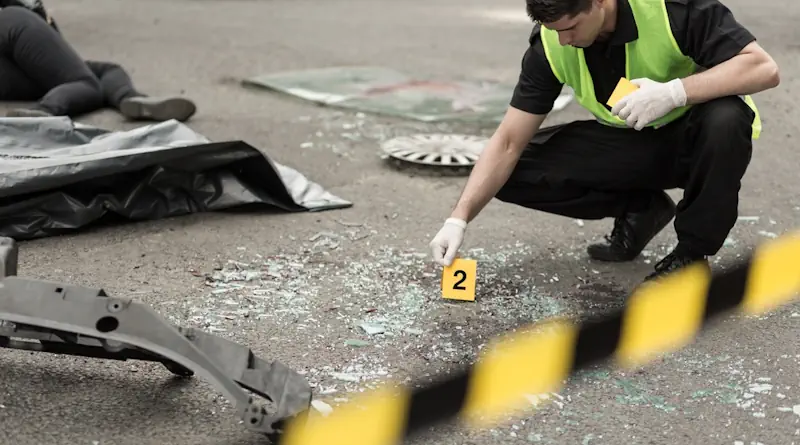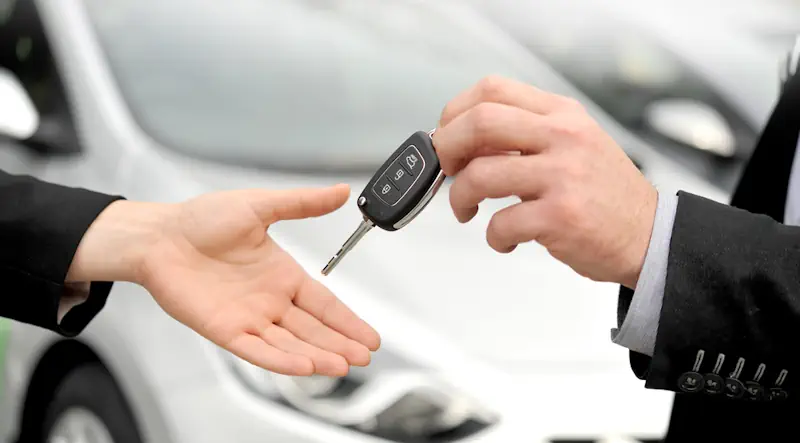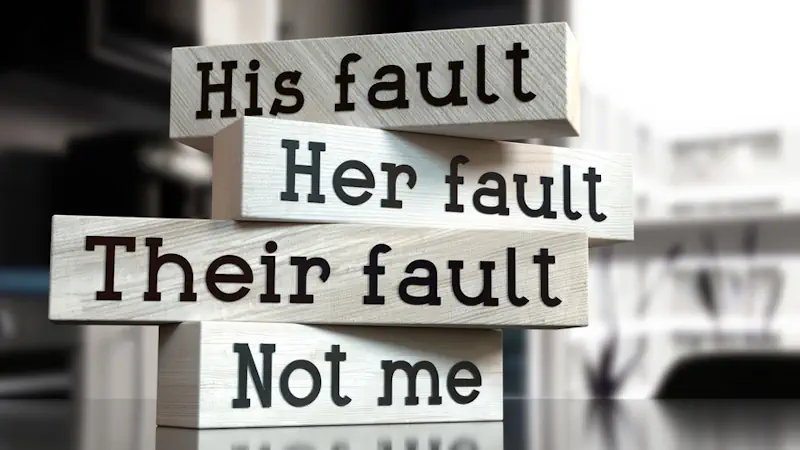Are you involved in a not-at-fault car accident? If so, you will be concerned about how to make a car insurance claim and its impact on your insurance. Our legal guide explains what to do next and how to file a compensation claim when injured in a not-at-fault accident.
About Not At Fault Car Accidents
In a not-at-fault car accident, the other driver is entirely to blame, with them bearing liability for the incident. As the not-at-fault driver, you can rightfully claim it’s “not my fault.”
Who is to Blame for The Motor Vehicle Accident?
Sometimes, such as when running a red light or in rear-end collisions, the type of accident determines the blame. In this case, the operator of the following vehicle is automatically the at-fault driver in most circumstances.
After a car accident, evidence is used to determine who is at fault. Mainly when both parties caused the collision, known as contributory negligence. In Australia, insurance adjusters assess accident claims to determine liability, using evidence like:
- The state road rules
- Photos and video from the accident scene
- Witness statements
- Police reports and enforcement notices.
- Did the other driver admit guilt?
Hence, knowing who is to blame is the first step in protecting a not-at-fault driver’s rights. It ensures they receive fair compensation and avoids potential costs that could impact their insurance.
How to determine fault for an accident >

Next Steps After a Not at Fault Accident
Following a car accident, we recommend you take these actions:
- Secure your safety and that of any other involved passengers or motorists.
- Move the vehicle to a safe place if possible.
- Check to see if anyone is injured.
- Don’t admit guilt or apologise, as these can create liability issues.
Following these steps, you streamline the process and gather all the information you need for your insurance claim. You should also:
- Exchanging information with the other party
- Documenting the accident scene
- Reporting the accident to law enforcement.
The above will help provide valuable evidence for your car insurance claim.
Steps to take after a car accident >
Exchanging Information
You must exchange information with the other party after a car accident, as you will need these details to start the accident claim process. If you think, “It’s not my fault, ” please don’t apologise, as this can be an admission of legal liability. You need details, such as the other party’s insurer plus their:
- Name and address
- Vehicle registration number
- Driver’s licence number
- The car accident time and date
Documenting the Scene
Making a successful claim relies on a comprehensive account of the car accident with as much evidence as possible, so please document the scene of the accident, including the following:
- Police and other official reports
- Expert evaluations
- Photos and video of the accident scene and surroundings
Be sure to include physical evidence like:
- Skid marks
- Damaged or broken signs
- The position of the other party’s vehicle
- The location of vehicle damage (which helps prove the at-fault driver)
- Vehicle parts lying on the ground
- And any other contributing environmental factors.
The photographic proof and thorough observations of the accident scene will make your insurance claim much stronger.
Reporting to Authorities
When you are involved in a Queensland traffic accident, The Transport Operations (Road Use Management) Act of 1995 states you must report the incident to the police when:
- Someone is hurt or deceased.
- The accident has created a hazardous environment.
In this situation, you are legally obligated to:
- Stop your car immediately.
- Seek medical attention for any injured parties.
Note: a hazardous environment includes:
- The need for a roadblock
- Fallen power lines
- A fuel leak
- Any other situation that endangers public safety
Other instances where police will be involved:
- The other driver disputes who is at fault
- A driver is under the influence of drugs or alcohol.
- The accident is a hit-and-run
- The at-fault driver is uncooperative
Handling Insurance Claims for a Not At Fault Accident
Several steps are involved in filing an insurance claim following a not-at-fault accident. You could:
- Claim insurance through your insurer’s online portal
- Over the phone
- Submitting a car insurance claim form via email or snail mail.
With comprehensive coverage, your insurance company will manage the process with the at-fault driver’s insurance provider or directly with the other driver if they are uninsured.
It’s important to note that you can’t claim directly from the other party’s insurer, but you can contact their third-party insurer to inform them of your claim against their customer.
Claiming Against Uninsured Drivers
In Queensland, all motorists must have third-party insurance coverage. However, this is not always the case. So, what happens when you need to make a claim against uninsured drivers?
Don’t despair. If an uninsured driver causes an accident, you can still file a claim, but in this case, you claim against the nominal defendant. This statutory government body will generally cover damages, including personal injury compensation. Sometimes, your third-party property insurance policy will allow you to claim a limited amount of damages if the at-fault driver is uninsured.
To determine the best course of action and to understand your options, you must ask your legal representative and/or insurance provider for their thoughts.
What is a nominal defendant claim >
Securing a Hire Car or Replacement Vehicle
Depending on the insurance policy terms, your entitlements following a not-at-fault car accident include the following:
• Restoration to your pre-accident status
• The right to a comparable replacement car during vehicle repairs or until settlement
• With comprehensive insurance, you may be eligible for a complimentary rental car while yours is fixed.
The application for a replacement car can often be submitted online or by phone. Relevant information is required to process the claim; approval is usually provided within 24 – 48 hours.
Managing Car Repairs and Authorised Workshops
Unsurprisingly, car repairs are often required after a car accident. The insurance provider typically begins working with an approved repairer after lodging a claim through their app or website. Some companies, like AAMI, offer lifetime guarantees on all authorized repairs, which remain with the car even after it is sold.

Preventative Measures and Safe Driving Practices
Protecting your legal rights depends on knowing the steps after a not-at-fault car accident. However, it’s always best to take preventative measures to avoid car accidents. Here are some steps you can take:
- Develop a responsible driving attitude and commit to being an aware driver.
- New drivers need to have substantial supervised driving experience.
- Begin by driving in low-traffic conditions, progressively moving to more complex situations.
- Always wear a seat belt, no matter where you are seated in a vehicle
- Get supervised practice driving in poor weather conditions
- Limiting the number of passengers in the car can reduce the risk of fatal crashes
- Choose a vehicle with higher safety ratings for better protection in a collision.
Legal Advice When The Other Driver Disputes Fault
Had a car accident and thought, “It’s not my fault”? Trust Splatt Lawyers to help you:
- Make a CTP claim
- Effectively negotiate with the other party’s insurance provider
- And get back on the road as soon as possible
However your accident happened, our legal team will assist you in gathering as much evidence as possible, including the relevant contact details, witness statements and details of the other party’s insurer.
Remember, when you are the injured, not at-fault driver in a car accident, you have the legal right to claim damages for your loss. Splatt Lawyers will support you through the CTP compensation process on a 100% No Win, No Fee basis with no upfront costs. Start now by calling 1800 700 125
Not-At-Fault Car Accident FAQs
How does insurance work if it’s not your fault?
If a traffic accident is not your fault, the other party and their insurer will be liable for the damages. You should focus on getting your car repaired and arranging a replacement vehicle. Your excess should be waived, and your claim will proceed as normal.
Do you have to pay an excess if you’re not at fault?
Yes, in most cases, you will still have to pay an excess, even if you are not the at-fault driver. However, depending on your insurance policy, there may be exceptions. It’s best to refer to your insurance product disclosure document for specific details.
Should I contact my insurance company if I am not at fault?
Yes, contacting your insurance company is advisable, even if you are not at fault in an accident. Your insurer can help guide you through the process and may cover some costs if the other driver isn’t insured.
What is a not-at-fault car accident?
A not-at-fault car accident means the other driver is entirely responsible for the accident and liable to pay damages.
